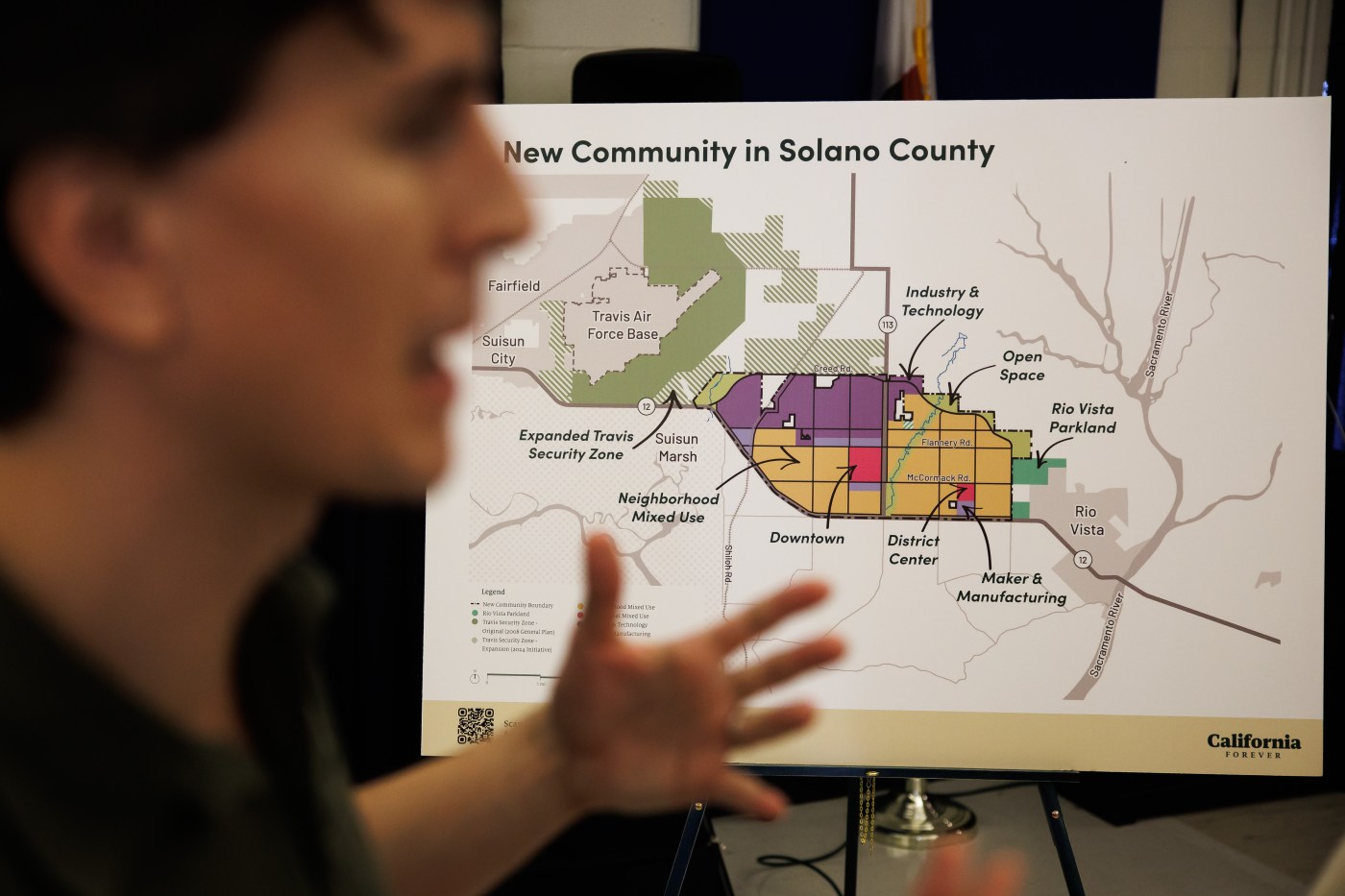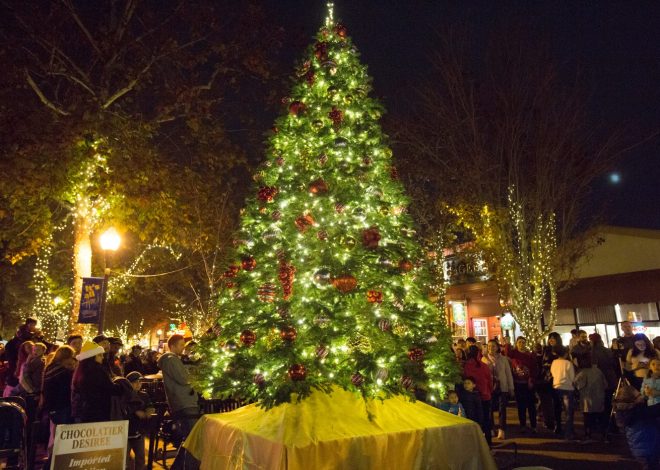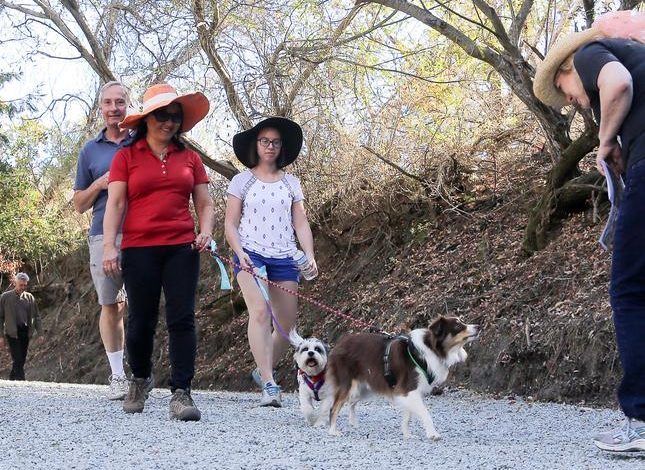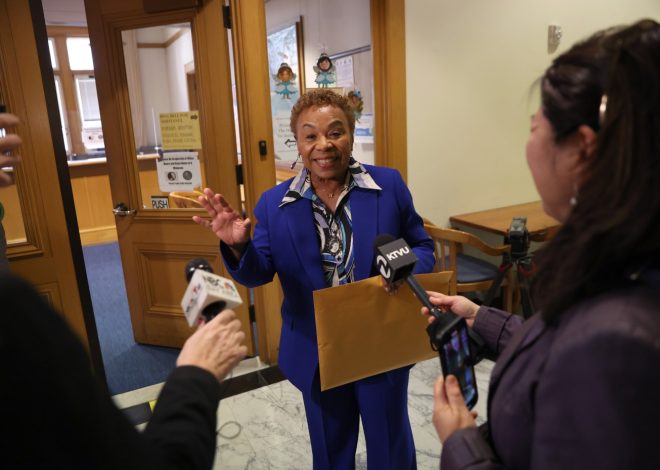
Elias: ‘California Forever’ ballot measure could’ve been hugely influential
A measure this fall letting Solano County voters approve — or not — a vast new development about 45 miles northeast of San Francisco just may have been the most influential local ballot proposition California has seen in decades, if it had gone forward.
Related Articles
Elias: Ricardo Lara, Gavin Newsom caving in to California’s insurers they regulate
Elias: Why not instead merely adopt Asimov’s rules to govern A.I.?
Elias: Newsom could be left out in the cold if Harris beats Trump
This measure would have let a brand-new full-scale city be built by a corps of billionaires as a partial solution to the housing shortage that has wracked the state’s lifestyle and politics for years, threatening the nature of many neighborhoods and the independence of city governments. The billionaires pulled their proposition from the ballot at midsummer, though, because they thought it could lose.
Instead of piecemeal infill developments and replacement of mini-malls and other relatively small buildings with huge high-rises containing hundreds of apartments and a few stores, this plan could have seen an entire new city plopped down on open space and farmland. Land for this already belonged to an outfit called “California Forever,” which quietly spent years buying up pieces of property south and west of Suisun City, Fairfield and Rio Vista, eventually aggregating 50,000 acres.
The billionaires, who did this gradually in order not to drive the price of land to forbidding levels, include LinkedIn co-founder Reid Hoffman, venture capitalist Mark Andreessen, Lauren Powell Jobs (the widow of Apple co-founder Steve Jobs) and former Goldman Sachs trader Jan Sramek, with Sramek now the project’s chief executive officer. Their purchases at one point had federal officials suspecting foreign agents might be angling for access to intelligence about the nearby Travis Air Force Base, a key facility for military flights to the Far East.
This was no spy adventure, though. Rather, it’s a land-use gamble, with the investors banking on 259,000 registered voters of a medium-sized county about midway between San Francisco and Sacramento to approve a gigantic new kind of development. It won’t go forward this year but maybe next time.
The proposed new city is to be completely walkable and bikeable and may eventually house as many as 400,000 persons. So large a development by itself could put a sizeable dent in the state’s housing shortage, promoters say. They said they had arranged with a dozen potential employers to provide at least 15,000 jobs for residents in fields from retail sales to robotics.
Instead of parks and schools going in gradually while new residents filter into a raw development, all 17,500 acres in this one were to be ready almost simultaneously — stores, homes, apartments, parks, schools and offices all opening about the same time.
The billionaires also promised a $500 million fund to help new residents make down-payments on homes. They planned a new sports stadium (are you listening, former Oakland A’s, now that Las Vegas shows signs of stadium hesitation?). Public transit would exist from the get-go.
It all would be a huge contrast to how other cities — even master-planned ones like Irvine in Orange County — have arisen, with their sometimes haphazard placement of buildings, homes, parks, schools and other services. The notion of using currently open land contrasts sharply with the trend of the last 10 years, stressing ever-greater urban density and the remaking of cities under threats of state legal action or funding cutoffs for services like police and sewers.
If the Solano County plan eventually happens, some of the vast desert spaces north and east of Los Angeles could also eventually find themselves hosting large new developments. That’s the way much of California was built, long before politicians like state Sen. Scott Wiener, D-San Francisco, successfully campaigned to make urban sprawl political anathema.
Solano County voters apparently were set to say “no” to all this, though. Now no one is quite sure what happens next in a high-stakes story that could eventually affect not only Solano County but the entire state, the development priorities of which could stand some major changes.
Email Thomas Elias at [email protected], and read more of his columns online at californiafocus.net.


